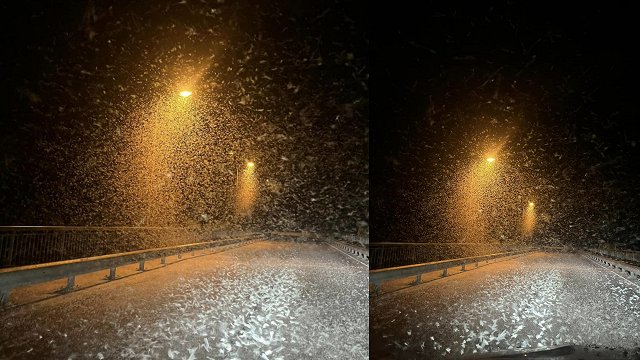In the event of favorable and snowy weather conditions, the State Forest Service invites residents to report signs of wolf presence in order to obtain more information on the distribution of wolves in Latvia.
“The longer the snow stays, the more, footprints, of course – a sign that the animal has been there, and perhaps it is easier to recognize the prints than on a sandy road or somewhere else. It's good in the snow,” said Valters Lūsis, head of the hunting department of the State Forest Service.
“Now is the right time for hunters and also our Forest Service officials to survey transects, and routes. Latvia is divided into 743 squares, we survey the majority, around 663 squares,” said Lusis.
Identifying the wolf's footprints is difficult because they are very similar to the dog's paws, and with some species, they are even identical.
“I'll agree, it's pretty hard, and often maybe someone can confuse them with a dog's prints [..] As I describe it, the wolf's foot is more oblong, between the first two toes there is a gap [..] it's not packed together tightly,” said Lūsis.
“There are dog varieties whose traces can't be distinguished from the wolves' at all. Then there must be a section, at least half a kilometer, to understand by behavior, because of course the dog will behave differently in the forest,” said Jānis Ozoliņš, lead researcher of the Latvian State Forestry Science Institute.
“Wolves love to use straight roads, which are not frequently found in the woods, the dog may have a more ragged route, more running off, going back to the road again, the wolf doesn't do that, it goes on its straight route, and then, when there's a reason to turn somewhere, he'll turn off and walk away. And won't come back so soon.”
The prints are not the only signs to detect the signs of the wolf's presence. “We can often see some excrement where they've left behind what they've eaten there. The wolf usually leaves feathers, bone fragments, the dog will never leave that,” said Lūsis.
In half of the territory of Latvia, signs of the presence of wolves have been observed, according to information from the State Forest Service.
“The most stable populations are North Kurzeme, then Central Vidzeme, North-East – near Alūksne, and Sēlija. Where larger woodlands are, the wolf population is more stable," said Lūsis.
To report signs of movement, evidence should be photographed and posted on the Mednis.LV app.
“There needs to be experienced, and there will not be too much value for the city, as we say, the “armchair expert” data. But of course, the value will rise if you photograph, and indicate the geographic coordinates of the picture. Tracking the footsteps, always go in the opposite direction of the animal,” Ozoliņš said.



























